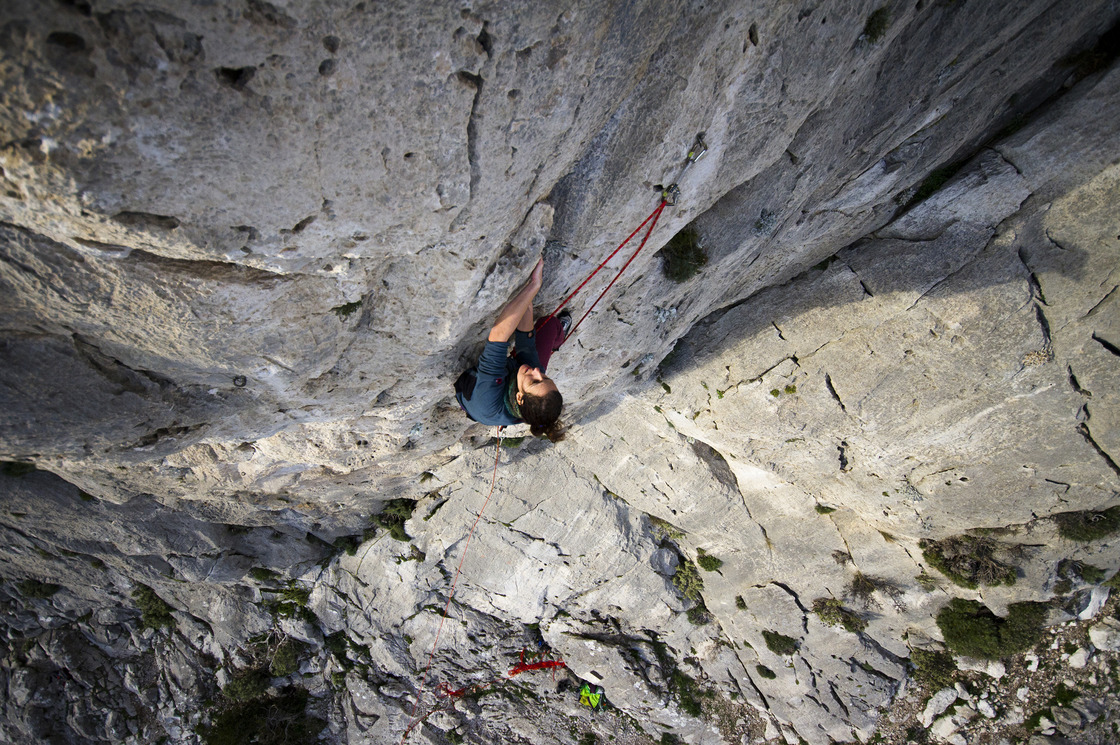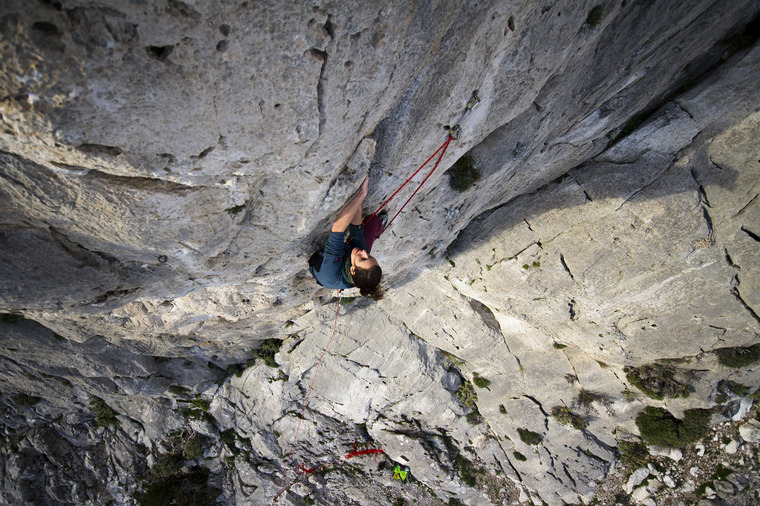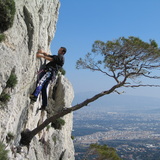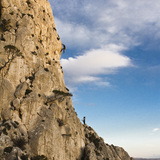The grey limestone outcrop of Varympopi, on the northern side of Athens, is one of the most recognisable features of the Athenian rock climbing geography. More importantly, it is a crag which occupies a prominent chapter in the local climbing history book, as it has been the theatre of some of the earliest climbing attempts in Athens.
Despite the passage of time and the discovery of numerous other crags around Athens, Varympopi is to this day a popular climbing destination especially for beginner Athenian climbers and climbing schools. Apart from its historical significance and the premium of its location (at the foothills of Mt Parnitha with splendid views over the city of Athens), it is the abundance of excellent, glacier-sculptured, solid limestone routes that draws climbers to the area. Varympopi is a forest of classic lines which despite their popularity, suffer from little or no polishing at all.
Regardless of climbing level and ability the rocks of Varympopi are certainly worth a day’s visit even if your climbing skill exceeds the technical difficulties the rock has to offer. A visit here is a walk in local history and climbing has a certain very distinct charm, one noticed even by the notorious Walter Bonnati who proclaimed that he “would be a happier man if he had such a rock face back home”.
With few exceptions, the routes of Varympopi are “numbered” rather than “named” following a tradition that started by earlier generations and continued by D. Korres with the publication of his guidebook in 1983. Over the years these numbers have acquired a “name” status and are being used universally to identify certain routes i.e. “6” or “34”. On such routes the old number is referenced in parenthesis. Nowadays many routes have numbers painted at their base that correspond to a newer numbering system.
The first climbing school in Greece took place at the Varympopi area back in the Spring of 1929 when the German-trained Nikos Tsoris demonstrated climbing techniques to members of the Athens Alpine Club (EOS Athinon). The activity in the pre-war era is only fragmentally documented but it is known that further climbing schools were carried out on years 1935/1936 by Kostas Natsis.
The coming of the WWII war and the civil war afterwards, meant the ceasing of any activity. Varympopi remained out of bounds for civilians during the German occupation.
The first post-war climbing school was organized by S. Vasilopoulos in 1956. This marked the start of a period which lasted till the end of the 60s and when legendary figures of Greek climbing (M. Zerf, P. Botinis, K. Gkeka, D. Liagkos, N. Blotti, F. Galinos to name a few) left their mark on the rocks. Many of today’s classics were established during that time. Remarkably, several solo ascents of these routes are recorded in the alpine club bulletins of the era. The early 60s also see the visit of Walter Bonnati (and his solo ascent of route 7B) as well as that of French alpinist André Contamine both documented by the climbing media of the time.
The 70s activity continues in the area but the style of ascents is gradually shifting from aid to free climbing. A leading advocate of this shift in ethics is D.Korres, one of the most influential figures of Greek climbing. Soon all the lines in Varympopi are freed and several new solos are being recorded (the most impressive being Pete Livesey’s on route “34”).
The 80s and the 90s are characterized by controversy marking the introduction of bolts in the crags, a move that is not welcomed by all. The hardest route to date is free climbed in Varympopi by Voutyropoulos bros. Varympopi remains a popular crag but the rise of sport climbing leads climbers to other crags for hard routes.
The marking of the new millennia finds Varympopi still a prominent climbing destination near Athens but the interest has irreversibly been shifted to other newer and harder crags/routes. The establishment of a new sector “Louloudia” is marked by more controversy and the “mysterious” disappearance of the hangers soon after its bolting.






